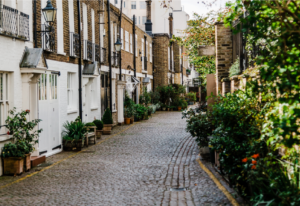On the surface, it’s always easy to look at well-maintained gathering locations that might include malls, theater, community centers, parks, etc; but the extensive work is done behind designing these places, always tends to be underestimated. The effect these places have on human psychology and the development of society ignored. These places create bonds between communities and strengthen the sense of attachment for the surroundings they are living in.
What do we know about public spaces?
The moment we leave the boundary of our private spaces like home, workspace, etc, we enter public spaces irrespective of our background, status, belief or gender. Whenever we talk about public spaces, one automatically assumes a physically existing location or a building. It doesn’t necessarily mean a typical garden or hotel-like building; it also involves spaces of everyday use like streets, sidewalk or bus stops, etc. Public domains can make multiple kinds of functions, used by different people at different time intervals.
Among urban development, there is a network of spaces that creates and influences connections and relationships within them. It fills the gap between different kinds of people with different beliefs and ideologies. Public spaces represent the city’s own identity which can be expressed through historical significance, landscaping features or it can also be topographical features; anything that is unique and diverse in the community.

Importance of public spaces
Public spaces provide a platform for each and every individual to come in contact with the social world and experience the opportunity and the chances it provides to express. These places help in the cultural development of communities and personal development on an individual level. It involves meeting new people, reuniting with old friends, participating and interacting through different activities. Apart from the fundamental features of the city, the spaces accommodate special events like festivals, public gatherings. Social interaction creates liveliness in the city. This not only restores the essence of the place but also enhances the citizen’s quality of life.
People should feel comfortable in any public area. Some of the best ways of doing that is through landscaping, street art, sculptures, and installations. Public arts tend to create a very comfortable environment, where people can fully express themselves and interact with a maximum number of people. Public spaces are welcoming. This includes barrier-free designed spaces with no restrictions on any part of society. Public spaces are easily accessible so that people can enjoy it for as long as they want. There are public spaces specially meant for recreational purposes.

Well planned spaces with a balanced public environment improve the quality of life people live in urbanized cities. Today’s sleek trends in architecture are becoming irrelevant to the living of communities, public spaces are important to add shared common experience of the people where they can actually interact through an unbuilt form.
Conservation and efficient use
Public spaces from different civilizations reflect the style and behavior of that era. Spaces are always designed according to social, economic and geographical factors, helping in understanding the life and living standards of various generations. Despite their great importance, public spaces are poorly neglected in planning and development. Lack of provisions for public spaces reduces economic activities, social stability, and security. Unplanned urbanization creates major problems, eliminating a healthy and sustainable environment for the society.
Best examples of public spaces are green areas, street markets, historical monuments, street performing and visual arts which express the unique identity of the city. These places have a population with shared interests which is important to the urban environment and must be protected and improved for the dwelling society.
Spaces involving streets, linear development, semi-public and public activities are different forms of the public realm. Therefore, the planning process and day to day activities of the local communities should not be ignored. The very initial state of planning must include the participation of local communities to express their needs and requirements. It helps to promote local awareness regarding the conservation of their locality.

